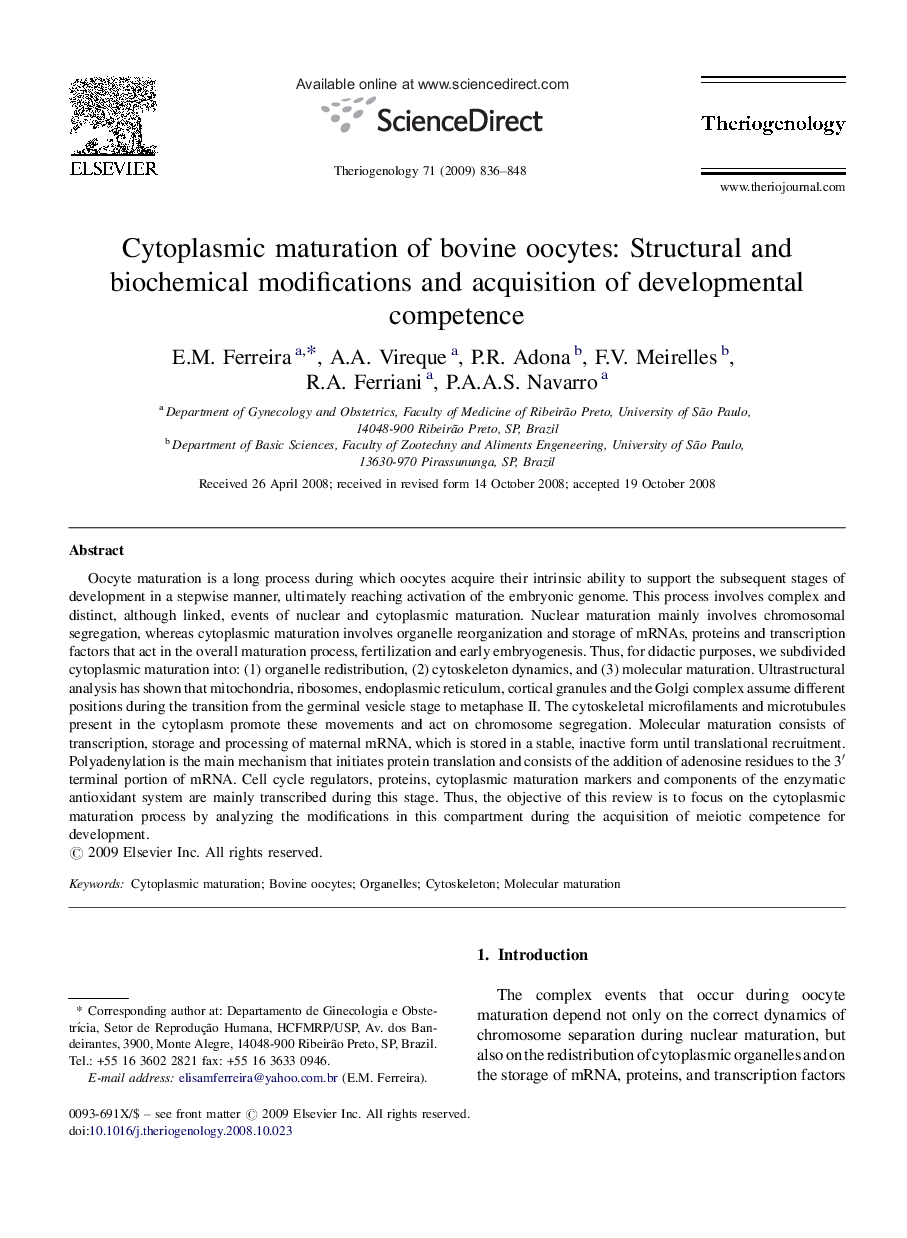| Article ID | Journal | Published Year | Pages | File Type |
|---|---|---|---|---|
| 10893092 | Theriogenology | 2009 | 13 Pages |
Abstract
Oocyte maturation is a long process during which oocytes acquire their intrinsic ability to support the subsequent stages of development in a stepwise manner, ultimately reaching activation of the embryonic genome. This process involves complex and distinct, although linked, events of nuclear and cytoplasmic maturation. Nuclear maturation mainly involves chromosomal segregation, whereas cytoplasmic maturation involves organelle reorganization and storage of mRNAs, proteins and transcription factors that act in the overall maturation process, fertilization and early embryogenesis. Thus, for didactic purposes, we subdivided cytoplasmic maturation into: (1) organelle redistribution, (2) cytoskeleton dynamics, and (3) molecular maturation. Ultrastructural analysis has shown that mitochondria, ribosomes, endoplasmic reticulum, cortical granules and the Golgi complex assume different positions during the transition from the germinal vesicle stage to metaphase II. The cytoskeletal microfilaments and microtubules present in the cytoplasm promote these movements and act on chromosome segregation. Molecular maturation consists of transcription, storage and processing of maternal mRNA, which is stored in a stable, inactive form until translational recruitment. Polyadenylation is the main mechanism that initiates protein translation and consists of the addition of adenosine residues to the 3â² terminal portion of mRNA. Cell cycle regulators, proteins, cytoplasmic maturation markers and components of the enzymatic antioxidant system are mainly transcribed during this stage. Thus, the objective of this review is to focus on the cytoplasmic maturation process by analyzing the modifications in this compartment during the acquisition of meiotic competence for development.
Related Topics
Life Sciences
Agricultural and Biological Sciences
Animal Science and Zoology
Authors
E.M. Ferreira, A.A. Vireque, P.R. Adona, F.V. Meirelles, R.A. Ferriani, P.A.A.S. Navarro,
